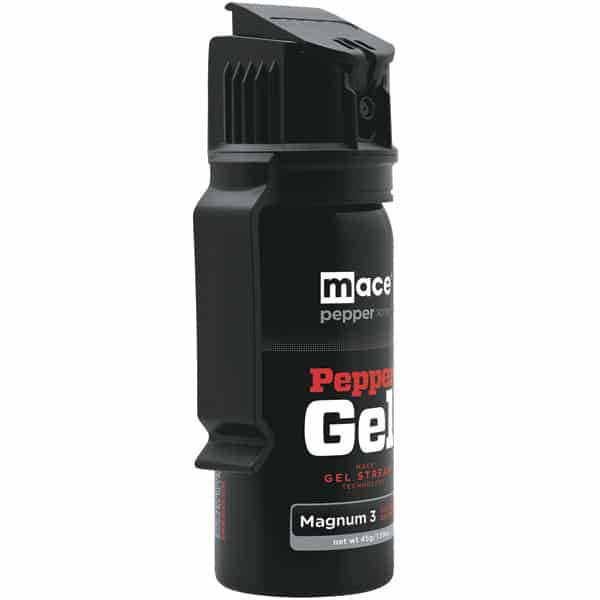

For Orders Over $25

On Any Of Our Products

Details On Refund Page
As the saying goes, ‘An ounce of prevention is worth a pound of cure.’ When you’re cycling in areas where bears and dogs are common, carrying repellent isn’t just wise; it’s essential.
You’ll find that the market offers a range of deterrents, from chemical sprays to ultrasonic devices and natural alternatives. But which one truly offers cyclists the peace of mind they need while moving through these territories?
Let’s explore the effectiveness, safety, and practicality of these options, ensuring you’re prepared for any encounter without compromising your ride.
When cycling in rural or forested areas, it’s important to recognize the signs of nearby wildlife to prevent unexpected encounters. Understanding animal behavior and encounter statistics is essential for your safety. Animals, including bears and dogs, often give signs before becoming aggressive.
Bears, for example, may clap their jaws, huff, or stomp as a warning. Dogs, on the other hand, might growl, bark, or adopt a stiff posture. Recognizing these behaviors can give you time to react appropriately.
Encounter statistics show that confrontations are rare but not unheard of. Most wild animals prefer to avoid humans, but if surprised or if they feel threatened, especially when with their young, they can become defensive. Knowing the likelihood of encounters in specific areas can help you prepare.
For instance, bear encounters are more common in certain forested regions during specific times of the year.
Chemical repellents offer an important line of defense against bear and dog encounters while cycling in wilderness areas. These substances are designed to deter these animals without causing them long-term harm, relying on their strong sense of smell to encourage them to keep their distance. It’s vital to understand both the repellent effectiveness and the application methods to guarantee your safety and the well-being of the wildlife.
Repellent effectiveness varies by product and the specific animals it’s designed to deter. Bear repellents, for example, typically contain capsaicin and related capsaicinoids, the same compounds that give chili peppers their heat. These substances can temporarily reduce a bear’s ability to smell and see, giving you time to retreat to safety. Dog repellents, on the other hand, might use less potent formulations but are equally effective in preventing attacks during your rides.
Application methods are equally important. Most repellents come in spray form, designed to create a barrier between you and the animal. You’ll need to carry the repellent where you can quickly access it, and know how to apply it effectively—usually spraying in a short burst, directed at the approaching animal, and making sure wind direction doesn’t render it ineffective. Always read the manufacturer’s instructions carefully to maximize your safety.
Shifting focus to ultrasonic deterrents, these devices offer a high-tech solution to keep bears and dogs at bay without resorting to chemical sprays. You’ll find these gadgets emit sounds at frequencies beyond human hearing, specifically designed to be uncomfortable for animals, encouraging them to keep their distance.
When evaluating device effectiveness, it’s important to understand the science behind it. Ultrasonic deterrents work on the principle that animals, particularly bears and dogs, have a wider hearing range than humans. This allows the devices to emit sounds at frequencies that are specifically irritating to these animals without affecting humans nearby. However, the effectiveness can vary based on several factors, including the proximity and direct line of sight to the animal.
One critical point to take into account is frequency limitations. Not all animals react the same way to various frequencies, and some may become habituated to the noise over time, reducing the deterrent’s effectiveness. Additionally, environmental factors like wind and physical obstructions can diminish the sound’s reach and impact.
Exploring natural repellent options, you’ll discover a range of plant-based solutions that effectively deter bears and dogs without harming the environment. These methods rely on the key sense of smell that both bears and dogs possess, utilizing scent masking and repelling techniques to keep you safe while cycling through their territories.
Among the most effective plant-based solutions are essential oils such as lavender, eucalyptus, and citronella. Not only do these oils emit strong scents that bears and dogs find unappealing, but they’re also environmentally friendly, breaking down naturally without leaving harmful residues. You can apply these oils to your clothing or bicycle, creating a scent barrier that acts as a deterrent.
Another natural option involves the use of pepper-based sprays. Derived from capsaicin, the compound that gives chili peppers their heat, these sprays can cause temporary discomfort to bears and dogs, encouraging them to keep their distance. However, it’s essential to use these sprays responsibly, aiming to deter rather than harm, ensuring you’re protecting yourself and wildlife.
While considering natural repellents is important, it’s equally important to adopt safety measures when cycling in areas inhabited by bears and dogs.
Your safety starts with preparation and awareness. Here are three important tips to enhance your protection:
Implementing these safety measures, alongside using natural repellents, reduces the risks associated with cycling in areas where wildlife encounters are possible. Stay safe, stay visible, and enjoy your ride with confidence.
So, you’ve armed yourself with chemical sprays, ultrasonic gadgets, and even doused yourself in natural concoctions, all in the name of peaceful pedaling through the wilderness. Remember, while you’re geared up like a futuristic pest control warrior, the irony isn’t lost on nature.
Those bears and dogs? They’re probably just curious or, at worst, mildly annoyed by your high-tech defensive aura. Ride confidently, knowing you’re prepared, but don’t forget to enjoy the ride and the occasional bewildered wildlife spectator.
Swift Self Defense
SWF Design Group LLC
176 Westbrook Dr. #110
Honey Brook, PA 19344
Call us: 610-306-9456